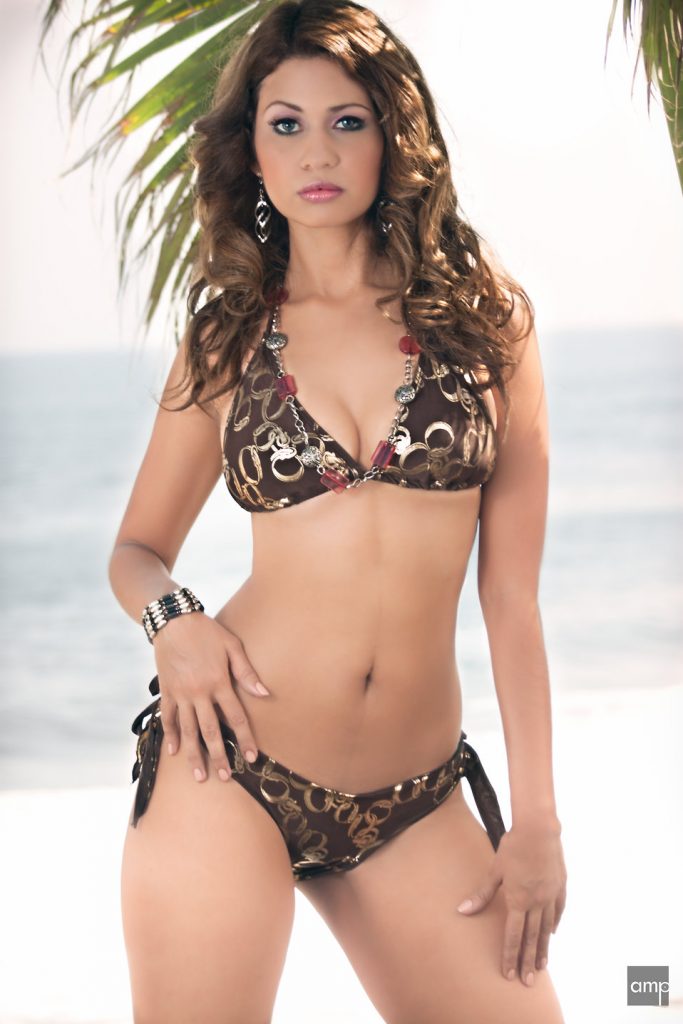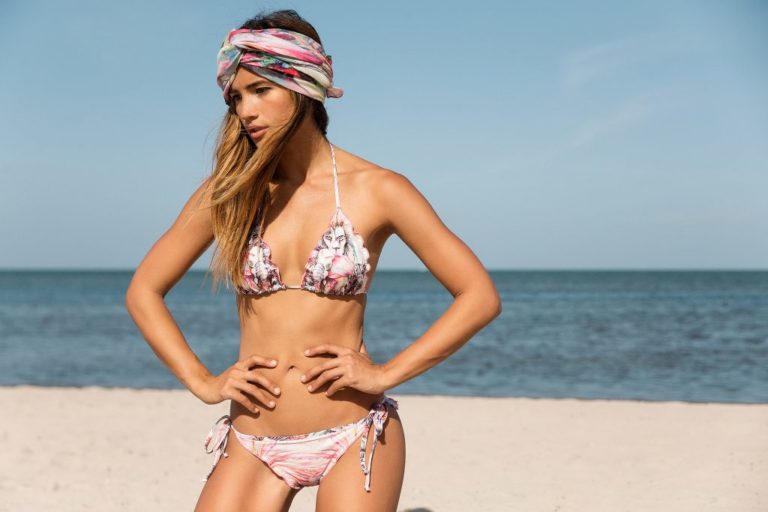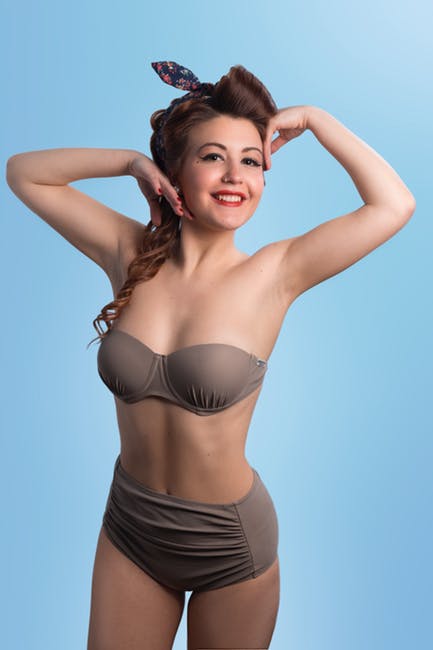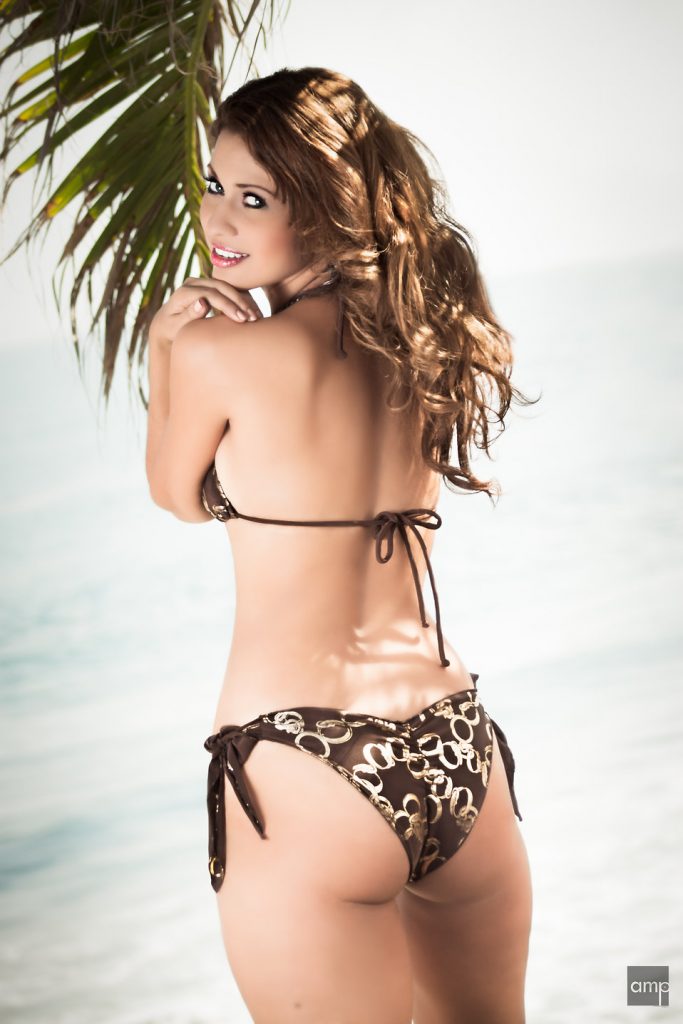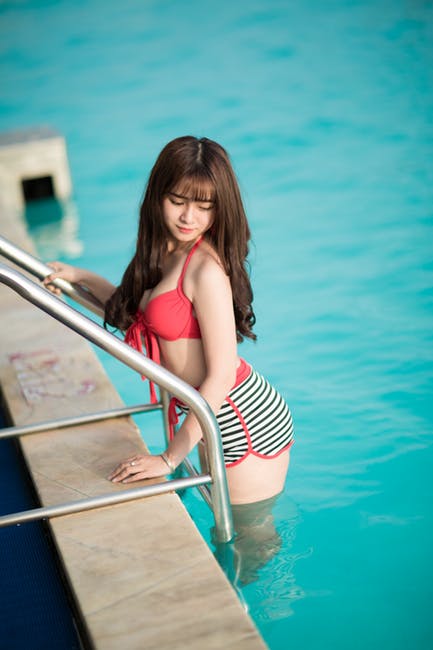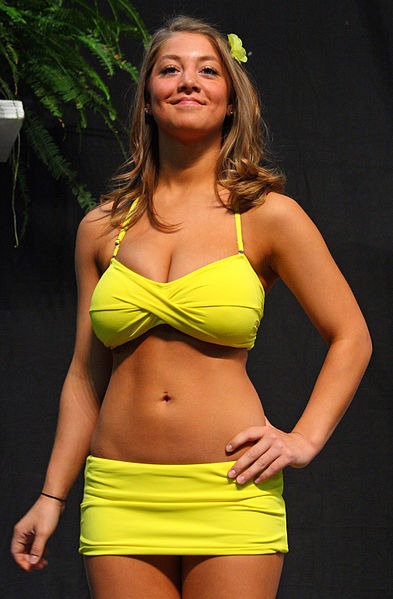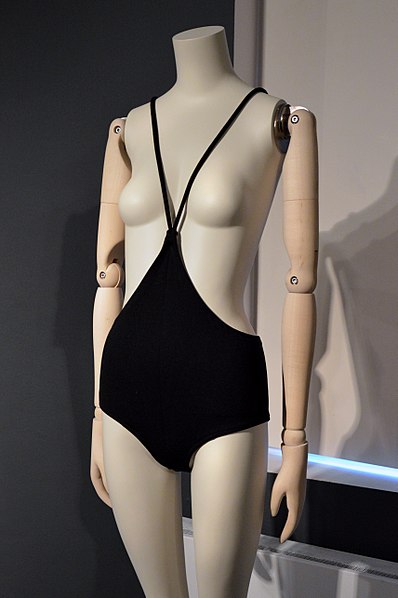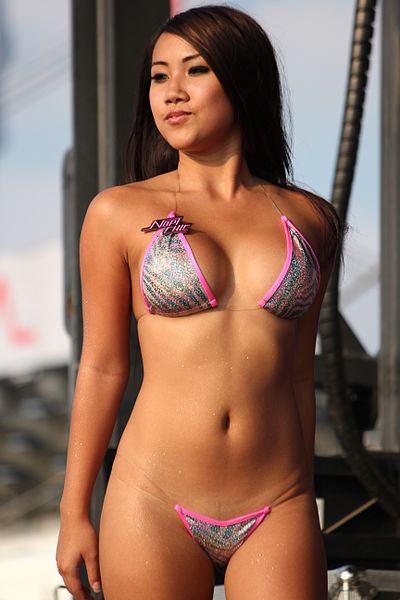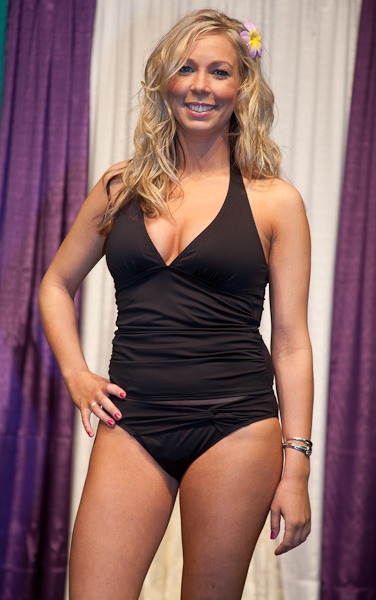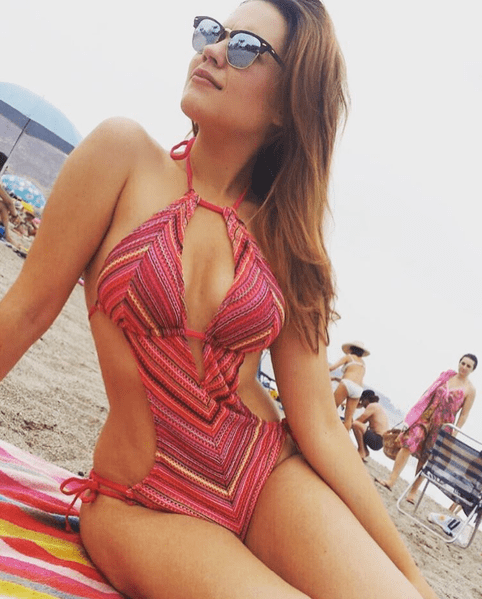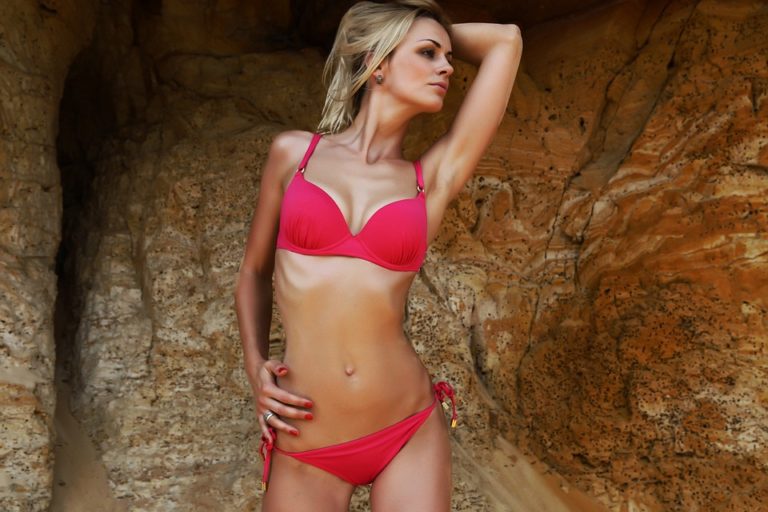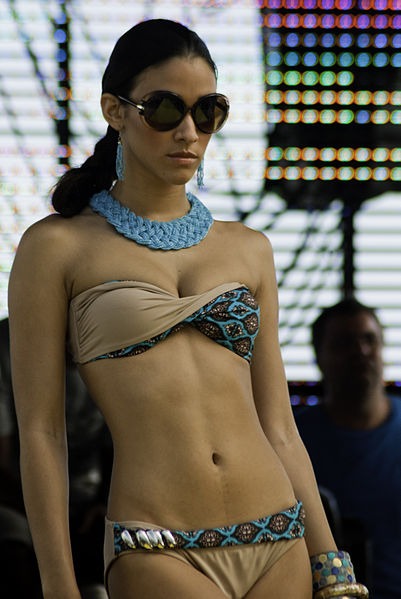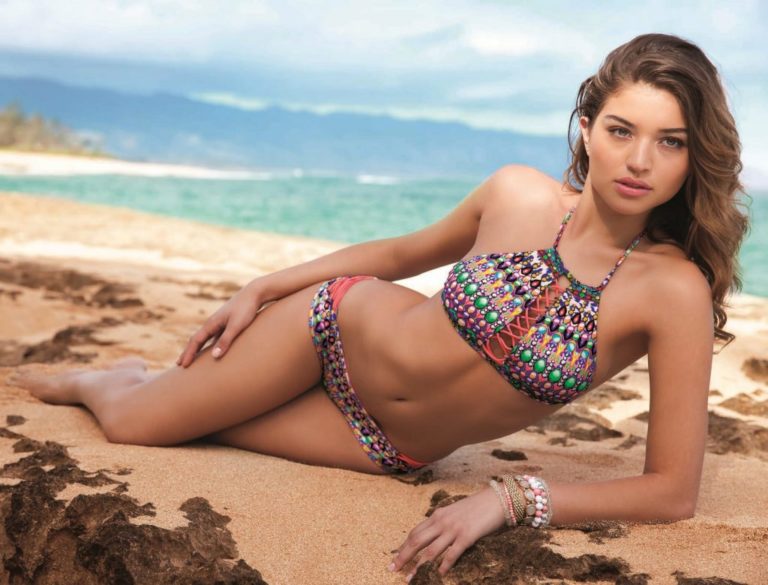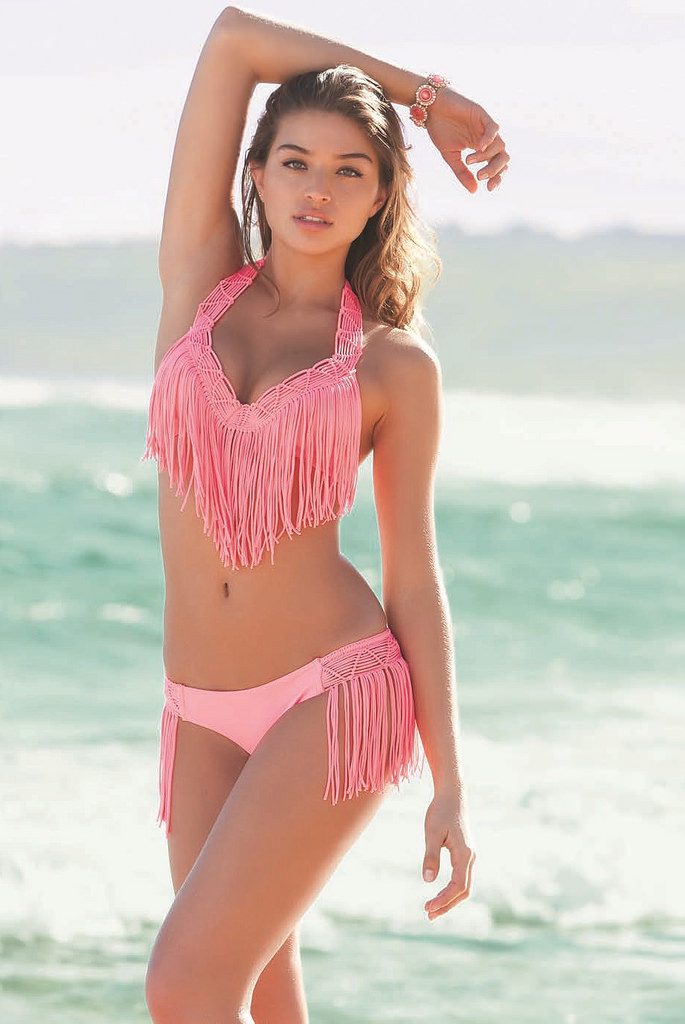Just like underwear comes in different styles, so does bikinis. A bikini is what a woman’s two-piece swimsuit is often called, featuring two triangles of fabric on top to cover the breasts, and two triangles of fabric on the bottom covering the pelvis and buttocks. It’s like your underwear, but only more presentable and designed to be worn in water activities like swimming.
History
Before we go on to the different types and styles of bikinis, let us give you a short backstory of this clothing type:
While the two-piece swimsuit look existed even in the classical times, the modern design that first attracted the public in Paris existed only since 1946. In post-war Europe, Europeans enjoyed their first war-free summer. French designers thought of bringing new fashions that matched the liberated mood of the people. Because fabric was in short supply back then and because they wanted to bring back swimwear sales, French designers launched the new, two-piece swimsuit designs. Jacques Heim released a design called the Atome, which was named after “atom,” the smallest particle of matter. It’s briefer than the two-piece swimsuits of the 1930s, announcing it as “world’s smallest bathing suit,” but it covered the wearer’s navel.
In 1946, a French automotive engineer named Louis Réard simultaneously launched his own two-piece swimsuit design he called the “bikini.” He adopted the name from the Bikini Atoll in the Pacific Ocean, which is the site where the first post-war nuclear weapons test were held. He thought that like the bomb explosion, the bikinis would create an “explosive commercial and cultural reaction.” He advertised it in a way competing with Heim’s design, calling the bikini as “smaller than the smallest bathing suit in the world.”
Réard designed the first string bikini, which reveals the wearers navel and much of the buttocks. No runway model would like to wear it, so it Réard hired a nude dancer Micheline Bernardini to model it at a review of swimsuit fashions. Photographs and articles of his launch were widely covered by the press. The bikini was a hit, especially among men, and Bernardini received some 50,000 fan letters after that.
Heim’s suit was first worn on the beach, but due to the revealing and controversial design of Réard’s two-piece, the bikini gained more attention of the people. It was slowly accepted by the public, but gradually gained acceptance as movie stars like Brigitte Bardot, Ursula Andress and Raquel Welch wore it in their films or on public beaches.
In America, the bikini was only worn with public acceptance during the 1960s, when a new emphasis on youth liberation brought the swimsuit to the masses in US beaches.
Now, the bikini has wide-spread acceptance in the Western society, while other places in the world still condone wearing it in public. By the early 2000s, bikinis became an $811-million-dollar business, and paved the way to spin-off services like bikini waxing and sun tanning.
Types of bikinis
Going bikini shopping can be a daunting task, especially for people with insecurities in their bodies. While only a few women have the “considerably perfect” bodies, wearing a bikini can be a means of embracing your body shape and being confident with how it looks. Here are the different types of bikinis to choose from:
Classic bikini
The classic bikini is the perfectly proportional bikini, which have bottoms that fit just right at the waist and a top that gives enough support for the breasts. You may have owned a classic bikini bottom at one point or another – it may come with strings to tie at the sides or just a simple slip-on style like your regular panties. When it comes to bikinis, the classic bikini won’t let you worry about exposing too much.
Hipster bikini
Also known as a low-cut bikini, this swimsuit style lays a couple inches lower at the pelvic bone compared to the classic bikini. It’s common to find it with side straps. The lower you wear it, the longer your torso may appear, so it’s best suited for ladies with shorter torsos who want to appear taller, or for accentuating narrow waist, small hips and trim abs. This is also great if you often wear low-cut jeans, so you won’t have to worry about tan lines.
High cut bikinis
If you’ve watched Baywatch, chances are you’ve seen them worn by models. It girls like Gigi Hadid, Bella Hadid, Kylie Jenner and Hailey Baldwon are sporting this type of bikini too. A high-cut bikini sits high on the hips, with cuts higher than the pelvic bone to give the illusion of longer legs, fuller hips and smaller waist. Some skimpier styles expose parts of the groin too, so make sure you’ve got a bikini wax before wearing this type of bikini. This type of bikini is best suited for petite ladies, or those who want to elongate their legs. A high-cut one-piece bikini or a two-piece in a darker color can guarantee a slimming effect for ladies with fuller figures.
High-waisted bikini
A high-waisted bikini provides ample coverage for your lower half, especially the abdomen and tummy area. It does offer a more belly control, making it perfect for ladies who are more conscious about their fleshier tummies. A high-waist bikini in a dark color can help slim down the hips. Choose a bottom with a thicker fabric to hold everything in place and provide the best tummy control while you’re on the move.
Cheeky bikini
As suggested by its name, a cheeky bikini can show off your “assets” to the world. This swimsuit type features a traditional triangle cut in the front, but with less booty coverage at the back, making it ideal if you’re looking to emphasize and show off your bum after all your hard work at the gym. It’s also great for ladies with a flatter and smaller buttocks, as it can give an illusion of a fuller booty. When picking out this type of bikini, choose something made of a thicker fabric like neoprene to give your butt the extra lift it needs, plus it also helps the bikini stay in place better so you don’t have to deal with wedgies all the time.
Boy short bikini
As suggested by the name, boy shorts are like short bottoms that provide modest coverage for your booty. This is perfect for ladies who aren’t into cheeky or string bikinis, or for those looking for a bikini for water sport activities. Though boy short bikinis are patterned over boxer shorts, they are typically shorter in length, and are available in different designs – even floral and flirty ones. There are also boy shorts with side cutouts for a more girly effect.
Skirtini
To provide more coverage at the bottom, the skirtini was made as an innovation for bikini-style clothes. This style isn’t that hot anymore, but the skirtini became popular in 2007 as one of the hottest swim wear trends. The skirtini is like a skirt, that fall just below the widest curve of your hip to offer more volume. It’s a great choice if you’re looking for more coverage for your bottom. It also suits pear-shaped ladies with wider hips as well.
Monokini
Originally a topless swimsuit like on the picture above, a monokini is a one-piece equivalent of a bikini. The monokini is also used to describe any topless swimsuit, which is often a bikini bottom worn without a top.
Modern designers now offer a more modest coverage for the monokini. It’s now used to describe any swimsuit with a connected bikini top and bottom, with a piece of fabric at either the front of the back. It’s best for athletic physiques who want to enhance or flaunt their curves. For women with more rectangular body shapes, a monokini with strategic curvy cutouts at the side can give an illusion of an hourglass figure.
Microkini
The microkini is for more daring people, as it’s an extremely skimpy bikini. It’s called microbikini because it offers small pieces of fabric, only enough to cover the genitals and the nipples (for women). Any additional straps are used only to keep the garment attached to the body. It keeps the wearer just within decent limits of decency.
Sling bikini
The sling bikini is an unbroken, one-piece swimsuit that looks like a bikini bottom with side straps extending upwards to cover the breasts and go over the shoulders. In the back, the straps join behind the neck and reaches down to become a thong. It leaves the entire sides of the torso uncovered. It’s a great choice for women who would like to appear taller, and for those who are confident enough to bare their torso and their buttocks.
Tankini
The tankini is a two-piece swimsuit combining a bikini bottom and a tank top. It’s loved by most, from sunbathers, swimmers to surfers alike as it gives more modesty with the convenience of a bikini. Because it provides more coverage and stays in place better than a regular bikini, the tankini is ideal for more active water lovers who don’t want to be re-adjusting their clothes constantly. It’s also great for pregnant ladies who want more coverage and convenience when going to the bathroom, as well as for those looking for more breast support and tummy bulge concealments.
Trikini
Trikinis are kind of similar to a one-piece (monokini), with a top and bottom connected by a piece of fabric in the front. The only difference is that it’s skimpier and more revealing. Originally, trikinis have a bottom and top that has two separate parts to cover the breasts. It has a front panel of fabric (or just strings for the modern and meager styles) connecting the three parts. It’s best suited for ladies with hourglass figures and a firm bosom that doesn’t require much support.
Underwire cup bikini
Underwire cup bikinis are inspired by your typical underwire cup bras introduced during the 1990s. It is fitted with an underwire – a thin, semi-circular strip of material (either metal, plastic or resin) placed under each bra cup. It is recommended for ladies with large bosoms for better chest support, or those who want to sport a cleavage but their smaller breasts need a lift. An underwire cup bikini top can come with two straps, halter strap or strapless (often found in bandeau style bikini tops).
Bandeau bikini
The bandeau (sometimes called a bandini) is a bandeau top with no straps on the shoulders and is worn with any bikini bottom. The bandeau may be fastened at the front or back, or be elastic to remove the need for a fastener. It typically includes soft cups or boning to remain in place or with a detachable halter strap for extra support. This is great for women with small to medium-sized chests and for those who want fewer tan lines.
Off-shoulder bikinis
Feminine, elegant-looking and chic, off-shoulder bikinis are perfect for dressier beach or poolside events. This style is perfect for ladies with wider hips, as it elongates the clavicle to balance it out. It’s also best suited for accentuating your swanlike neck or sexy collarbones. If you have a perkier breasts, you can get an off-shoulder bikini top with mesh or crisscross straps down the front to show them off. This is also a great swimsuit of choice if you’re simply looking to get some pretty photos of yourself in a beautiful location.
Halter bikini
The halter bikini is very trendy nowadays. The halter bikini top has straps that fasten around the neck and offers more frontal coverage to support bigger busts, or simply provide more coverage at the top. It covers more of your breasts and your clavicles, cutting the length of your shoulders and make them look smaller. This look can be very sporty and also very girly, especially if you choose mesh or crochet detailing, as well as fun feminine prints.
Fringe or flounce bikini
A fringe or flounce bikini can accentuate your clavicle and brings an illusion of volume in your chest without bringing in a thick and uncomfortable padding. Fringes are ornamental loose threads like a tassel, while flouce Like the off shoulder bikini, it’s a dressier style of swimwear, making it perfect for beach and poolside parties.


